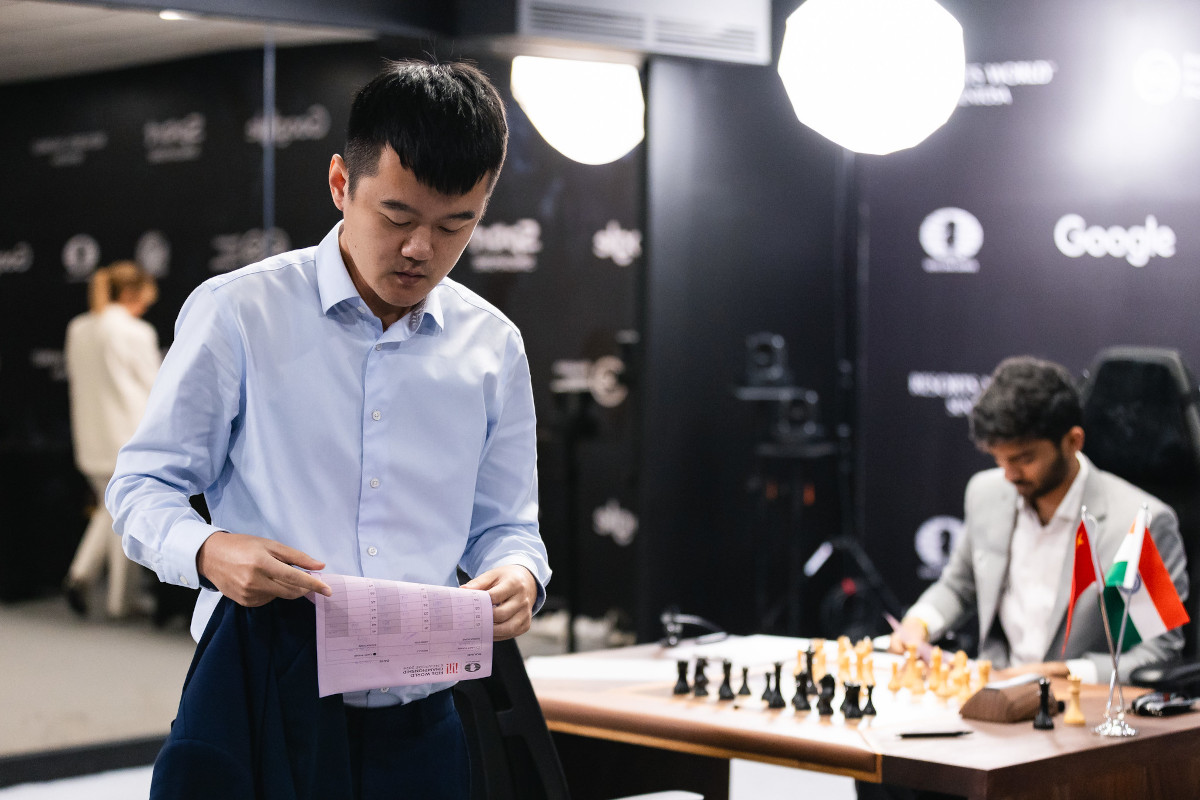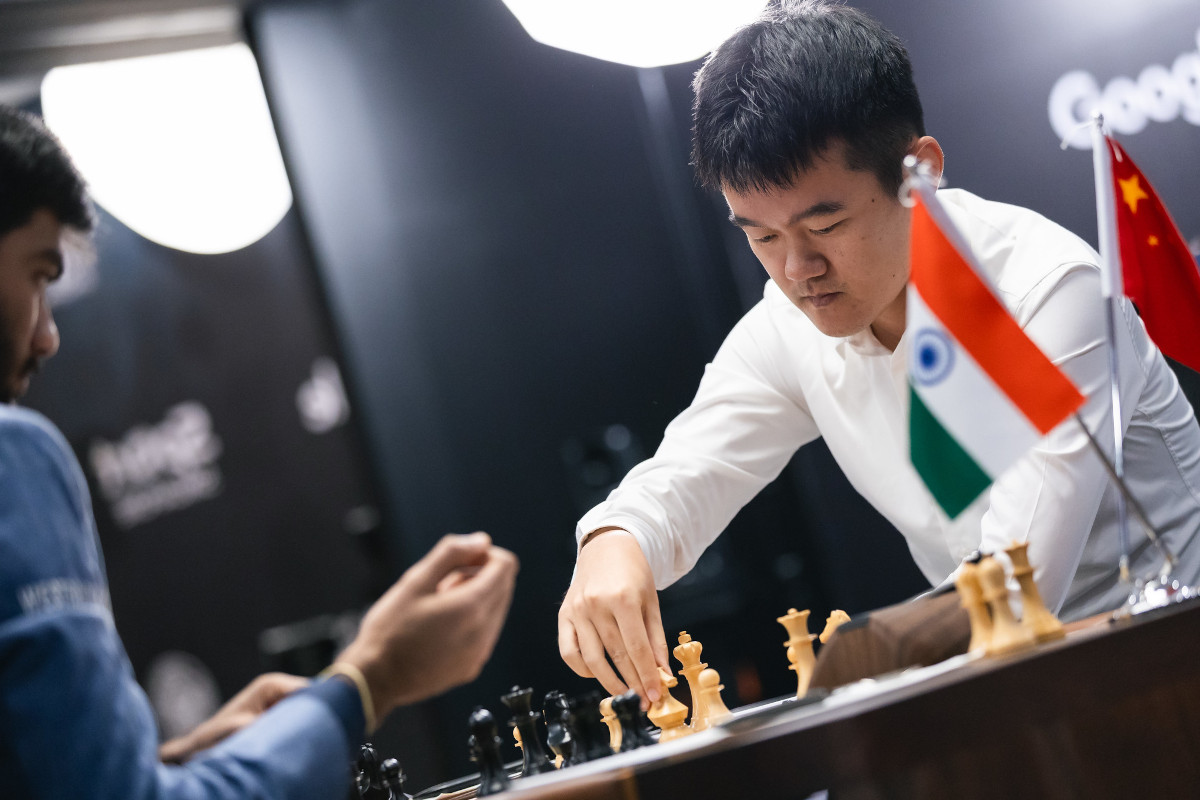


[Note that Jon Speelman also looks at the content of the article in video format, here embedded at the end of the article.]
I'm going to write this column incrementally, updating it after each game of the World Championship. Of course, these have been annotated in great detail all over the place, but I want to focus on just a few moments and what they reveal about the players and the state of the match.
My preliminary title, "Remember 1963", is an exhortation that presumably only a tiny proportion of my readers will be able to take literally. I was very much alive myself, and indeed had been taught the moves of chess on Boxing Day 1962 (which I recently discovered was the eve of the great freeze in the UK). But I wasn't really aware of Botvinnik v. Petrosian until my mum bought me my first "real" chess book – not a beginner's book like Bott and Morrison's excellent Chess for Children, and later The Chess Apprentice, which as I've said here before was Bob Wade's account of that match.
Ding wasn't born until 1992 and Gukesh until more than 40 years after Botvinnik v. Petrosian in 2006, but I think that that match does teach us something about the importance of keeping a level head. I gave games one and five here a month ago so I won't repeat them, but the important point is that Petrosian, who had never beaten Botvinnik, played utterly abysmally in game one and, rather than panic, simply carried on as if nothing had happened. This seemed to confound Botvinnik, and Petrosian famously won game five and later the match.

Tigran Petrosian v. Mikhail Botvinnik in 1963
We'll see over the coming days how the match pans out but my advice to Gukesh today would have been very much not to take the game to heart and just to carry on and if possible not try "too hard". This applies to Ding too, of course. He was exceptionally nervous in game one because he hadn't won a classical game since January when he beat Gukesh himself and Max Warmerdam at Wijk ann Zee.
The most important thing under the crushing pressure of a match is to create a space in which you can operate and that has to happen in real time but can be planned for.
Game two was something of an interlude but also interesting, of course. After the opening, Gukesh needed to play accurately to avoid a long-term positional disadvantage, but he found a couple of good moves, solved the problem and drew (seemingly) pretty easily.
Then came game three, in which Gukesh created complicated tactical problems from the off. Ding reacted well to start with, but it seemed hubristic to leave his bishop trapped on c2, and Gukesh was able to take advantage. Admittedly retreating the bishop to f5 and then e6 would have been very complicated too. Computer engines find ways to get decent compensation, but that isn't really the point. If he'd just retreated the bishop to f5, then Ding would have had a very decent position and the engines even give him the edge.
As it was, Gukesh won the piece, consolidated really well and then won time as he was about to emerge a whole rook ahead. It was his first-ever win against Ding at classical chess, and at that moment I felt that the match tipped clearly in the challenger's favour again.

Gukesh levelled the score in game three | Photo: FIDE / Eng Chin An
In game two, Ding as White had created some strategic problems for Gukesh which needed to be met accurately. He did something similar (in a different opening) in game four, but again Gukesh was well up to the task and when Ding had the choice between hand-to-hand fighting and equalising, he probably pretty sensibly chose the latter. The pattern which has been emerging is of Ding trying to get control but shying away from messy positions, the more so after he was out-calculated in game three.
In game five, Gukesh returned to 1.e4 and, when Ding persisted with the French, switched to the Exchange Variation. It soon got quite tense, but as Gukesh strove to create opportunities for himself, he somewhat overstepped the mark and was in some danger, at least for a move or two. But he pulled himself together and found a decent defence, and Ding really didn't seem to believe that he had real winning chances since he immediately bailed out. Neither of them was hugely impressive in this game, and if I were to add another fairly empty exhortation, it would be to both of them to believe in themselves when they have real chances. Apart from game one, this probably applies more to Ding than Gukesh, who has been pretty optimistic for the rest of the match.
Gukesh was certainly optimistic in game 6, when in this diagram, he spurned a draw by threefold repetition which at this moment he could have claimed: by writing 26...Qg5-e7 on his scoresheet.
As I've noted in the game file, by refusing the draw, he asserted regarding the gaping wound on his queenside, "Tis but a scratch". Later in the press conference, he said, "I thought I always have counterplay... It's not for playing for a win or anything. I just wanted to make a few more moves and see what happens". But I think that he was being pretty optimistic, and our lords and silicon masters broadly agree.
Of course, Gukesh did survive pretty easily and emerge more or less without a scratch. This looks as I write like a psychological victory for him. But maybe Ding has been sucking him in playing rope-a-dope?

Ding Liren during game six | Photo: FIDE / Eng Chin An
Select an entry from the list to switch between games